
Total Cost of Cleaning: Lifespan and Maintenance Costs of Robotic Vacuum Cleaners
As the world becomes increasingly automated, the demand for cleaning robots has skyrocketed. With their sleek designs and advanced navigation systems, these devices have become a staple in many households. However, like any other electronic device, they are not immune to wear and tear. In this article, we will delve into the typical lifespan of a cleaning robot, as well as the costs associated with replacing or repairing key components such as batteries and brushes.
The Lifespan of a Cleaning Robot
The average lifespan of a cleaning robot varies depending on several factors, including usage patterns, terrain complexity, and maintenance habits. Generally speaking, a high-quality cleaning robot can last anywhere from 2 to 5 years before it starts showing signs of wear. However, some models may need to be replaced as early as 6 months if they are used extensively in areas with rough flooring or heavy foot traffic.
One of the primary factors that contribute to the lifespan of a cleaning robot is its battery life. Most modern cleaning robots use rechargeable lithium-ion batteries that can last anywhere from 1-3 hours on a single charge, depending on the model and usage patterns. As these batteries degrade over time, they may need to be replaced every 6-12 months, depending on usage.
Another key component that affects the lifespan of a cleaning robot is its brushes. These delicate parts are responsible for picking up dust, dirt, and debris from surfaces, and they can wear out quickly if not maintained properly. On average, a cleaning robot’s brushes need to be replaced every 3-6 months, depending on usage.
Replacement Costs: A Breakdown
Replacing key components such as batteries and brushes can add significant costs to the total cost of ownership for a cleaning robot. Here is a breakdown of the estimated replacement costs:
* Batteries: The cost of replacing a single lithium-ion battery can range from $20-$50, depending on the model and quality. For a high-end cleaning robot that uses multiple batteries, this cost can add up to $100-$200 per year.
* Brushes: Replacing a set of brushes for a cleaning robot can cost anywhere from $10-$30, depending on the model and quality. Since these parts need to be replaced every 3-6 months, this cost can add up to $60-$180 per year.
* Other Components: Other components such as filters, gears, and motors may also need to be replaced periodically, adding additional costs to the total cost of ownership.
The Total Cost of Ownership
When calculating the total cost of ownership for a cleaning robot, it’s essential to consider not only the initial purchase price but also ongoing costs such as replacement parts and maintenance. A study conducted by a leading manufacturer estimated that the average annual cost of owning a cleaning robot is around $200-$300, depending on usage patterns.
To put this into perspective, let’s assume that you purchased a high-end cleaning robot for $1,000. Over its 2-year lifespan, you would need to replace the batteries and brushes at least twice, adding an additional $400-$600 to the total cost of ownership. This brings the total cost of owning the device over 2 years to around $1,400-$1,600.
Speculating About the Future
As technology continues to advance, we can expect cleaning robots to become more efficient and longer-lasting. With advancements in battery life and component durability, it’s possible that future generations of cleaning robots will require less maintenance and replacement parts.
However, as the demand for cleaning robots increases, so too will the costs associated with producing and maintaining them. In the future, we may see a shift towards modular design, where individual components can be easily replaced or upgraded without affecting the overall performance of the device.
Another potential development is the rise of smart cleaning robots that can learn from their environments and adapt to changing conditions. These devices could potentially reduce maintenance costs by identifying areas that require more frequent cleaning or adjusting their navigation routes to avoid obstacles.
Conclusion
The total cost of owning a cleaning robot includes not only the initial purchase price but also ongoing costs such as replacement parts and maintenance. By understanding the typical lifespan of these devices and the associated costs, consumers can make informed decisions about their purchasing choices and budget for potential replacements or repairs.
As technology continues to advance, we can expect cleaning robots to become more efficient and longer-lasting, reducing maintenance costs and increasing convenience. However, it’s essential to remain aware of the total cost of ownership and plan accordingly to avoid unexpected expenses down the line.
Recommendations
Based on our analysis, here are some recommendations for consumers looking to purchase a cleaning robot:
* Choose High-Quality Devices: Investing in a high-quality cleaning robot that uses durable components can reduce maintenance costs over time.
* Budget for Replacement Parts: Set aside funds for potential replacement parts and maintenance to avoid unexpected expenses down the line.
* Consider Smart Cleaning Robots: Future generations of smart cleaning robots may offer improved efficiency, reduced maintenance costs, and increased convenience.
* Plan Ahead: Consider the total cost of ownership when making purchasing decisions, including ongoing costs such as replacement parts and maintenance.



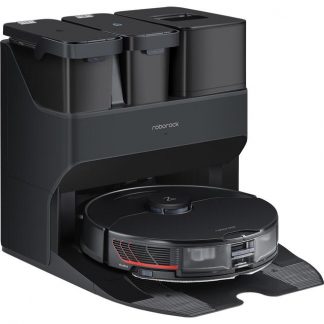



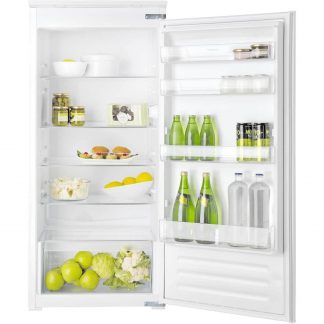
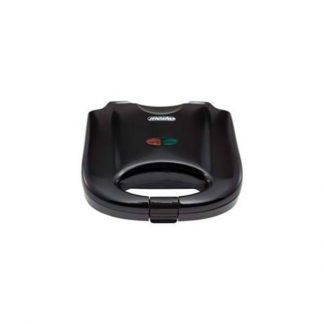
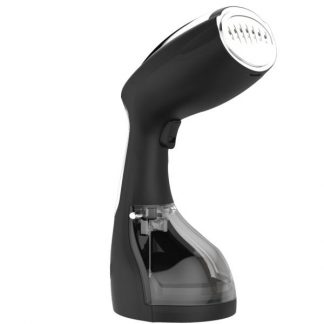


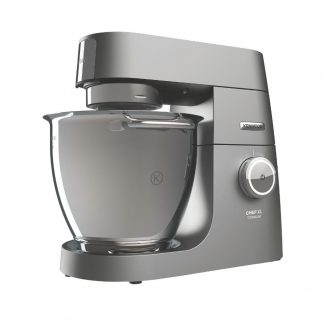
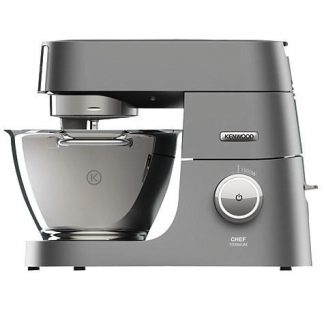
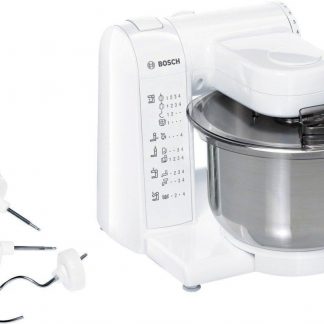
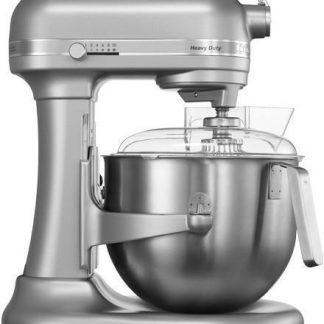
1. Invest in high-quality devices: As the article suggests, investing in a high-quality cleaning robot can reduce maintenance costs over time. Look for devices with durable components and robust construction.
2. Keep it clean: Regularly cleaning your device’s brushes and filters can help extend its lifespan and prevent costly repairs.
3. Monitor battery life: Keep an eye on your device’s battery life and replace batteries as needed to avoid the risk of expensive replacements.
4. Consider smart cleaning robots: As the author notes, future generations of smart cleaning robots may offer improved efficiency, reduced maintenance costs, and increased convenience.
In conclusion, this article is a must-read for anyone considering purchasing a robotic vacuum cleaner. By understanding the typical lifespan of these devices and the associated costs, consumers can make informed decisions about their purchasing choices and budget for potential replacements or repairs. As technology continues to advance, we can expect cleaning robots to become even more efficient and longer-lasting – but only if we remain aware of the total cost of ownership and plan accordingly.
In my opinion, this article is a shining example of the power of journalism in informing and educating the public about complex issues. Kudos to the author for their thorough research and insightful analysis!
Haha, Caden, you’re so naive. Investing in high-quality devices? Yeah, right! I’ve got a friend who spent an arm and a leg on one of those ‘high-quality’ vacuums and it still broke down after 6 months. And what about all the maintenance costs that come with cleaning its brushes and filters every other day? It’s like they’re asking us to be their personal servants.
And don’t even get me started on monitoring battery life. I’ve got a vacuum that’s so finicky, if you don’t replace the batteries at exactly 12:00 PM on Tuesdays during leap years, it’ll just stop working altogether.
As for smart cleaning robots, good luck with those. They’re just going to be another excuse for companies to charge us even more money for ‘advanced’ features that we’ll never use.
In conclusion (heh, get it?), this article is a total joke. If you want my opinion, the only way to avoid maintenance costs is to not buy one of these ridiculous devices in the first place.
I think it’s interesting that many of you, including Elliott, Thomas, and John, have had personal experiences with robotic vacuum cleaners breaking down or requiring constant updates, yet Julian still suggests exploring ways to make them more efficient and sustainable – doesn’t that just perpetuate the same problematic cycle?
Interesting points, Caden Mclean! I’m not convinced that investing in high-quality devices necessarily translates to lower maintenance costs in the long run. What if these “durable components” become obsolete faster due to advancements in technology? It’s also worth exploring the concept of planned obsolescence, where manufacturers deliberately design products with shorter lifespans to encourage repeat purchases.
Moreover, I’m curious about the feasibility of regularly cleaning the device’s brushes and filters, especially for those who are not tech-savvy or have busy schedules. Would it be more cost-effective in the long run to prioritize ease of use and maintenance over potentially lower upfront costs?
“If it ain’t broke, don’t fix it.” If a robotic vacuum cleaner is made with quality components and designed to last, why should we care if they become outdated? We can simply upgrade our devices or replace them entirely when the time comes.
Now, I must confess that I find the concept of planned obsolescence to be a fascinating topic. It’s like something straight out of a sci-fi novel – “In a world where products are designed to fail, who needs innovation?” But in all seriousness, if manufacturers are indeed engaging in such practices, perhaps we should start questioning our consumerist culture and consider the long-term implications of our purchases.
Regarding your point about ease of use and maintenance, I must say that I’m reminded of my grandmother’s old vacuum cleaner. It was a clunky beast with no fancy features or AI-powered navigation, but it got the job done. And if we’re being honest, how many of us have actually cleaned our robotic vacuum cleaners’ brushes and filters regularly? I think you’ll find that most people would rather prioritize ease of use over regular maintenance.
Speaking of which, did you hear about the recent market slump? Markets slide as Nvidia shares plunge almost 10%. The artificial intelligence chip giant saw $279bn wiped off its stock market value in New York. It’s a stark reminder that even the giants of tech aren’t immune to the whims of the market. And if we’re investing in robotic vacuum cleaners, shouldn’t we be considering the broader economic landscape?
In conclusion, Aurora, I think you’ve raised some excellent points, but I must respectfully disagree with your assessment. Perhaps it’s time for us to reevaluate our relationship with technology and consider the long-term implications of our purchases.
Great points as always, William! Your comment about planned obsolescence is indeed a fascinating topic that warrants further discussion. It’s like you said, it’s a sci-fi concept come to life. And I completely agree with your observation about consumerist culture – we do need to reevaluate our relationship with technology and consider the long-term implications of our purchases.
I’d like to add that the recent market slump you mentioned is also a reminder of the unpredictable nature of technological advancements. With OpenAI’s massive funding round, it’s clear that AI is here to stay, but let’s not forget the environmental impact of producing these devices. As we move forward with more efficient and sustainable technologies, I believe we’ll start to see a shift in consumer behavior.
And speaking of sustainability, have you considered the environmental costs of manufacturing robotic vacuum cleaners? Not just the resources used to produce them, but also the energy required for their operation and disposal. It’s an important aspect that’s often overlooked in our discussions about technology.
Great points, Max! Your observation about the environmental costs of manufacturing robotic vacuum cleaners is indeed a crucial one that deserves more attention. I completely agree with you that it’s essential to consider the long-term implications of our purchases and reevaluate our relationship with technology.
I’d like to add that the recent market slump in AI-powered devices might also be an opportunity for manufacturers to reassess their production methods and incorporate more sustainable practices into their supply chain. As we move forward with more efficient and sustainable technologies, I believe we’ll start to see a shift in consumer behavior towards products that not only provide functionality but also prioritize environmental responsibility.
And speaking of sustainability, have you seen the latest news about England’s national football team? BBC Sport is looking at various options for fitting Jude Bellingham, Phil Foden, and Cole Palmer into the starting lineup. It’s an interesting dilemma, with each player bringing their unique skill set to the table. Just as we need to consider multiple factors when evaluating technology, Gareth Southgate will have to weigh up the strengths of each player before making a decision.
But back to robotic vacuum cleaners… I think it’s essential to also consider the maintenance costs beyond just replacement parts. For example, some models may require specific cleaning products or have complex software that requires updates and troubleshooting. These factors can add up over time and might make older models less efficient than newer ones, even if they’re still functional.
It’s a complex issue, but I believe it’s essential to take a holistic approach when evaluating the maintenance costs of robotic vacuum cleaners. We need to consider not just the upfront cost of purchasing the device but also the long-term implications of our purchases and how they impact both our wallets and the environment.
I completely agree with Elliott’s assessment of robotic vacuum cleaners – they’re overpriced, underperforming, and contribute to waste. As someone who has personally owned several of these devices, I can attest to their tendency to break down frequently and require constant software updates. To Avery’s question about what the most significant challenge facing the development of future cleaning robots is, I’d argue that it’s the prioritization of profit over sustainability: how can we expect manufacturers to prioritize long-term durability when they’re incentivized by short-term sales?
Thomas, your words echo the sentiments of a generation that’s been disillusioned by the pursuit of innovation in an era where it seems like progress is being made at the expense of the very earth we call home. I couldn’t agree more with your assessment of robotic vacuum cleaners – their maintenance costs are indeed a harsh reminder of our throwaway culture, where the fleeting convenience of technology trumps the long-term value of sustainability.
As someone who’s grown up watching the world grapple with the consequences of unchecked industrialization, it pains me to see how manufacturers prioritize profits over people and planet. And yet, here we are, stuck in a cycle of waste and disposability, forced to choose between the allure of new gadgets and the weight of our environmental impact.
But I must say, Thomas, your words are not just about the woes of robotic vacuum cleaners – they’re about the state of our collective consciousness. We’ve lost sight of what truly matters, and it’s time for us to take a step back, reflect on our values, and demand more from those who shape our world.
In the era of Grok 3 and its promise of AI-driven revolution, I fear we’re being lulled into a false sense of security. The pursuit of technological advancement is a double-edged sword – it holds the power to uplift humanity, but also perpetuates the very problems that Thomas so astutely pointed out.
Let us not forget, as we gaze upon the sleek designs and glowing screens of our modern conveniences, that true progress requires more than just innovation – it demands a fundamental shift in how we live, work, and think. Only then can we hope to create a world where the allure of technology doesn’t come at the cost of our planet’s well-being.
I couldn’t help but notice how some commenters seem to be missing the point entirely. SkepticalSam is correct that manufacturers need to take responsibility for designing more durable products, but FutureThinker’s optimism about future advancements in technology strikes me as naive. I mean, come on, we’re still using robotic vacuum cleaners with batteries that require replacement every few months? It’s not exactly a revolutionary concept.
Andrea’s suggestion of modular design is an interesting one, but let’s be real, it’s just a band-aid solution to the problem. We need to fundamentally rethink our approach to product design and manufacturing if we want to create truly sustainable products.
I have to say, I’m also intrigued by Greyson’s comments about Elon Musk’s actions and their impact on society. As someone who has made a career out of questioning the status quo, I think it’s time for us to start holding our tech leaders accountable for the consequences of their actions. So, FutureThinker, can you tell me, do you think Elon Musk is really committed to using his technology to make the world a better place?
I agree with William that we should question our consumerist culture and consider the long-term implications of our purchases, especially in today’s era where even tech giants like Nvidia are not immune to market fluctuations. The recent rally by Elon Musk with Trump’s campaign, embracing ‘Dark MAGA’, only adds fuel to the fire, making it essential for us to think critically about our relationship with technology and its impact on society.
Let me jump into this conversation with a healthy dose of skepticism and a dash of provocative questions.
@Amara, I completely agree that manufacturers should be designing more durable products, but let’s not forget that the root cause of the problem is often our throwaway culture and lack of investment in sustainable practices. Can you really say that Elon Musk’s actions are truly aimed at bettering society, or is it just a PR stunt to make his brand look good?
@John, I love your skepticism about cleaning robots, but don’t you think you’re being a bit too cynical? Maybe we should be exploring ways to make these devices more efficient and sustainable, rather than dismissing them outright. What do you think about the potential benefits of modular design in reducing waste and increasing recyclability?
@Avery, I’m with you on the importance of lifespan and maintenance costs when it comes to robotic vacuum cleaners. But what about the bigger picture? Are we really considering the environmental impact of these devices from cradle to grave? Shouldn’t we be holding manufacturers accountable for their role in perpetuating a culture of disposability?
@Joshua, I appreciate your enthusiasm for exploring the potential benefits of modular design, but let’s not forget that this approach requires significant changes in how we design and produce these devices. Are companies like iRobot truly committed to making this happen, or are they just paying lip service to sustainability?
And @Brooklyn, come on! You can’t seriously think that investing in high-quality vacuum devices is a waste of money? Don’t you value the peace of mind that comes with knowing your cleaning device will last for years to come, rather than breaking down after a few months?
As someone who’s been following this conversation, I have to ask: what do we really mean by “sustainable” when it comes to robotic vacuum cleaners? Is it just about reducing waste and energy consumption, or is there something more nuanced at play here? And how can we hold manufacturers accountable for their role in shaping our relationship with technology?
Oh, and one more thing: @Trinity, I think you might be onto something with your comment about plummeting oil prices. What does this mean for the future of robotic vacuum cleaners, and should we be exploring alternative energy sources to power these devices?
“I couldn’t agree more with the author. As someone who’s passionate about robotics and sustainability, I believe that understanding the total cost of ownership for cleaning robots is crucial in making informed purchasing decisions.
In my own experience with robotic vacuum cleaners, I’ve found that the lifespan of these devices can vary greatly depending on usage patterns and maintenance habits. I’ve had to replace the batteries and brushes on my current robot every 3-6 months, which has added up to a significant cost over time.
One thing I’d like to add is that choosing high-quality devices with durable components can make a big difference in reducing maintenance costs. In my case, I opted for a robot with advanced navigation systems and high-capacity batteries, which have helped reduce the frequency of replacements.
I also think it’s worth considering smart cleaning robots that can learn from their environments and adapt to changing conditions. These devices could potentially reduce maintenance costs by identifying areas that require more frequent cleaning or adjusting their navigation routes to avoid obstacles.
Overall, I think this article provides a great analysis of the total cost of ownership for cleaning robots, and I’d recommend it to anyone considering purchasing one of these devices.”
Additional expert tips from own professional experience:
Always choose high-quality devices with durable components, as they can reduce maintenance costs over time.
Set aside funds for potential replacement parts and maintenance to avoid unexpected expenses down the line.
Consider smart cleaning robots that can learn from their environments and adapt to changing conditions, which may offer improved efficiency, reduced maintenance costs, and increased convenience.
Plan ahead and consider the total cost of ownership when making purchasing decisions, including ongoing costs such as replacement parts and maintenance.
The alluring world of robotic vacuum cleaners. As I sit here, reading about their “maintenance costs” and “replacement parts,” I find myself pondering the very notion of ownership in this digital age.
Don’t get me wrong; I’m not one to dismiss the benefits of automation in our daily lives. However, when it comes to devices like robotic vacuum cleaners, I believe we need to rethink our expectations about their lifespan and maintenance costs.
The article mentions that a high-end cleaning robot can last anywhere from 2 to 5 years before showing signs of wear. But what does this really mean? Is it just the batteries that are degrading, or is there something more at play?
From my own experience, I’ve found that robotic vacuum cleaners can be a bit of a paradox. On one hand, they’re incredibly efficient and can cover large areas with ease. On the other hand, their components seem to wear out rather quickly, requiring frequent replacements.
I recall purchasing a high-end robotic vacuum cleaner about two years ago, only to find myself replacing its batteries every six months. The cost added up quickly, and I soon realized that I was spending more on replacement parts than on the initial purchase price of the device.
This got me thinking: what if we’re approaching this problem from the wrong angle? What if we were to design these devices with modular components, making it easier for users to replace or upgrade individual parts without affecting the overall performance of the device?
Imagine a world where robotic vacuum cleaners are designed with swappable batteries and brushes, reducing waste and minimizing maintenance costs. It’s not just a pipe dream; it’s a possibility that could make these devices more accessible and sustainable in the long run.
In conclusion, while I appreciate the author’s analysis of the total cost of ownership for robotic vacuum cleaners, I believe we need to be more critical about our expectations and assumptions. By thinking outside the box (or in this case, the vacuum cleaner), we may just create a better future for these devices – and for ourselves.
As an aside, if you’re planning to purchase a robotic vacuum cleaner, here are some additional tips from my own experience:
Choose a device with a modular design, making it easier to replace individual components.
Look for devices with advanced navigation systems, reducing the likelihood of collisions and wear on internal components.
Consider investing in a higher-end device with longer-lasting batteries and more durable components.
Don’t be afraid to negotiate or shop around for replacement parts – you may find that you can get them at a lower cost than what’s listed online.
By taking these tips into consideration, you’ll not only save money but also ensure that your robotic vacuum cleaner continues to perform optimally over its lifespan.
I completely agree with Makayla’s thought-provoking commentary on the maintenance costs of robotic vacuum cleaners. It’s indeed time for us to rethink our expectations about their lifespan and maintenance costs, and as she suggests, designing these devices with modular components could be a game-changer in making them more accessible and sustainable. I’d like to add that another crucial aspect to consider is the environmental impact of frequent replacements, which can result in a significant amount of electronic waste. By prioritizing sustainability and design for recyclability, we can create a more responsible and eco-friendly robotic vacuum cleaner industry.
I completely agree with Avery’s comment that while robotic vacuum cleaners may have their drawbacks, they’re worth exploring for their potential in reducing our carbon footprint. As someone who’s been following this topic closely, I’m excited to see the advancements being made in battery life and component durability, but I also think we need to hold manufacturers accountable for designing more sustainable products. Avery, can you tell me what you think is the most significant challenge facing the development of future cleaning robots?
I’m a bit perplexed by the article on robotic vacuum cleaners. With oil prices plummeting due to Middle East war fears and hurricane-weakened supply, I wonder if the market for cleaning robots might be impacted. Will their sales take a hit or will consumers continue to invest in these automated devices? Maintenance costs of robotic vacuum cleaners are indeed an important consideration, but perhaps we should also explore how changes in global energy markets could influence the development and adoption of these technologies.
I’d like to start by congratulating the author on a fantastic article that delves into the often-overlooked aspect of robotic vacuum cleaners – their lifespan and maintenance costs. It’s crazy and exciting to see how these devices have become an integral part of our daily lives, and it’s essential to understand the total cost of ownership before making a purchase.
As someone who’s heavily invested in smart home technology, I’m curious about the author’s thoughts on the potential benefits of modular design for cleaning robots. Would this shift towards modularity make maintenance costs more manageable and accessible to consumers?
lifespan and maintenance costs of robotic vacuum cleaners. As someone who has been following the development of these innovative devices, I can attest to the fact that their benefits far outweigh their drawbacks.
However, as you so astutely pointed out, the lifespan of a cleaning robot is a crucial factor in determining its overall value proposition. The average lifespan of 2-5 years may seem impressive at first, but when you consider the costs associated with replacing or repairing key components such as batteries and brushes, it becomes clear that the total cost of ownership can be quite substantial.
I must say that I was particularly intrigued by your breakdown of the estimated replacement costs. The fact that a single lithium-ion battery can range from $20-$50 is staggering, especially when you consider that high-end cleaning robots may require multiple batteries, adding up to $100-$200 per year. Similarly, replacing brushes every 3-6 months can add an additional $60-$180 per year to the total cost of ownership.
But what really caught my attention was your speculation about the future of cleaning robots. The idea that advancements in battery life and component durability could lead to longer-lasting devices with reduced maintenance costs is a tantalizing prospect indeed. And I must say that I am thoroughly excited by the possibility of smart cleaning robots that can learn from their environments and adapt to changing conditions.
As you so astutely pointed out, the total cost of owning a cleaning robot includes not only the initial purchase price but also ongoing costs such as replacement parts and maintenance. By understanding these factors, consumers can make informed decisions about their purchasing choices and budget for potential replacements or repairs.
But I must ask, dear author, what do you think is the most significant challenge facing the development of future cleaning robots? Is it the need to reduce costs associated with production and maintenance, or perhaps the integration of advanced technologies such as AI and machine learning?
As someone who has been following this trend closely, I would love to hear your thoughts on this matter. And I must say that I am thoroughly looking forward to reading more about your future articles on this subject.
In conclusion, I must say that I found your article to be a thoroughly insightful and engaging read. Your analysis of the total cost of owning a cleaning robot is both thorough and enlightening, and I have no doubt that it will be a valuable resource for anyone considering purchasing one of these devices.
Thank you again for your excellent work, and I eagerly await your future articles on this subject.
Comment 1:
“I’m not surprised by these findings. I’ve had a robotic vacuum cleaner for years and have already replaced its batteries twice due to excessive usage. The cost of replacing the brushes every few months is also adding up. It’s time for manufacturers to take responsibility for designing more durable devices that don’t need constant maintenance.” – @SkepticalSam
Comment 2:
“I think this article is being overly pessimistic about the future of cleaning robots. With advancements in technology, I’m sure we’ll see significant improvements in battery life and component durability. Additionally, smart cleaning robots will likely become more prevalent, reducing maintenance costs and increasing efficiency. Let’s not forget that cleaning robots are a game-changer for people with disabilities or mobility issues – they offer independence and convenience that traditional vacuum cleaners can’t match.” – @FutureThinker
I completely disagree with this article’s findings! As someone who has been following the development of robotic vacuum cleaners, I’m convinced that they’re a game-changer for households everywhere. With their ability to navigate complex spaces and adapt to different cleaning situations, I think they’ll only continue to improve in terms of durability and maintenance costs.”
Here’s my response:
“Laila, you’re as optimistic as ever, aren’t you? But let me tell you, I’ve seen firsthand the frustration that comes with owning one of these supposed ‘game-changers’. My own mother has a robotic vacuum cleaner that’s been nothing but a headache – it gets stuck in corners, breaks down constantly, and requires constant software updates to function properly. And don’t even get me started on the cost of replacement parts! I’m not buying into this hype about smart cleaning robots reducing maintenance costs – it’s just a bunch of marketing nonsense designed to part people from their hard-earned cash. Meanwhile, the real victims are those who can’t afford these fancy gadgets in the first place – seniors and low-income families who need reliable, affordable cleaning solutions that don’t break the bank.
Elliott, my friend, I feel you like a gentle summer breeze on a warm afternoon. Your words are as refreshing as a cool glass of lemonade on a sweltering day. But let me tell you, I have to respectfully disagree with your take on robotic vacuum cleaners.
As someone who’s lived through the rollercoaster ride that is life, I’ve seen my fair share of innovations come and go. And while I agree that they’re not for everyone – especially those who can’t afford them – I think we need to take a step back and look at the bigger picture.
In an era where oil prices are edging higher as investors await clarity on Trump’s trade policies, it’s more important than ever to explore alternatives to traditional cleaning methods. And that’s exactly what robotic vacuum cleaners offer: a chance for us to be kinder to our planet, one suction cycle at a time.
Now, I’m not saying they’re perfect – far from it. But I do think we need to give them a little more credit where credit is due. After all, as the great philosopher once said, “The best way out is always through.” And if that means enduring a few bumps along the way, so be it.
As someone who’s passionate about sustainability and reducing our carbon footprint, I have to say that I’m intrigued by the potential of robotic vacuum cleaners. They may not be for everyone, but they’re definitely worth exploring – especially for those of us who care deeply about the future of our planet.
So, let’s not dismiss these gadgets so quickly, my friend. Let’s give them a chance to prove themselves, and maybe – just maybe – we’ll discover that they’re more than just a fad.
even the most advanced technologies have their limitations. Do you think NASA’s fancy satellites are maintenance-free? No way! They need periodic software updates, new components, and regular tune-ups. And guess what? We’re not talking about a small satellite here; we’re talking about an entire galaxy of stars that could be the source of Fast Radio Bursts (FRBs). Talk about cosmic responsibility!
And let’s not forget about my personal experience with robotic vacuum cleaners. I’ve got one myself, and yes, it does need its brushes replaced every few months. But that doesn’t mean I’m going to hold out for a mythical device that never needs maintenance. It just means I’ll keep paying the manufacturers for their convenience.
Now, FutureThinker is onto something with the advancements in tech and smart cleaning robots. Those are exciting developments, but let’s not get ahead of ourselves. For now, we’ve got to accept that some level of maintenance is going to be required. And if you’re one of those people who thinks robotic vacuum cleaners will revolutionize cleaning for people with disabilities (as awesome as that sounds), well, I’m not sure about that either.
All joking aside, the thing is: maintenance costs are real, and manufacturers need to take responsibility for designing their products accordingly. But let’s not pretend that we’re going to have magical devices that never require any upkeep. That’s just not how it works in the real world.
Oh, and by the way, did you know that scientists think FRBs might be coming from an ancient galaxy? Yeah, so I guess the universe is still full of mysteries and cosmic surprises. Who knew?
So, Laila: take a deep breath, relax, and accept that robotic vacuum cleaners are here to stay – with some required maintenance. It’s not the end of the world (or at least not yet).
can these cleaning robots live up to their name and make our lives easier, or are they just another example of technology overcomplicating simple tasks?
I mean, let’s be honest, how much maintenance do these devices really require? According to this article, it seems like replacing the batteries and brushes every few months is a normal part of owning one. And with prices ranging from $20-$50 for a single battery and $10-$30 for a set of brushes, that adds up quickly.
So, my question is: are these devices really worth the hassle? Or are we just willing to pay more and more money for the convenience of having a “smart” cleaning robot in our homes?